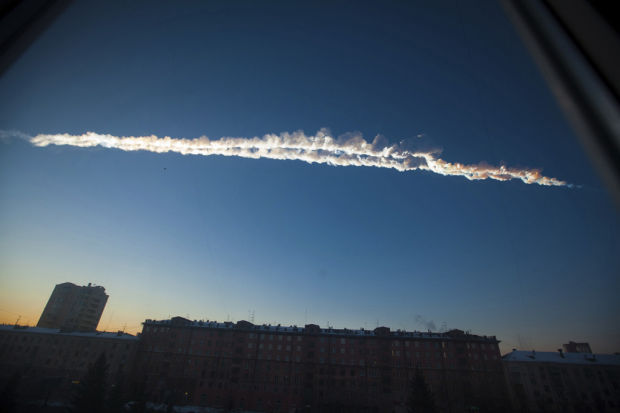The asteroid that flew by Earth Tuesday was about 20 meters (65 feet) in diameter and never got closer than 41 or so moon orbits.
Wednesday, a slightly larger asteroid named 2015 DS53 flew by at 17.2 times the distance to the moon — still a safe distance (more than 4 million miles) from Earth and its gravitational tug.
Another one (or more) will fly by today and you can read all about it at the “Daily Minor Planet” website, where you can also sign up for email alerts about the space rocks and read stories about all things asteroid.
The website, designed in a collaboration between the Minor Planet Center at the Harvard-Smithsonian Center for Astrophysics and volunteer big-data geeks at Oracle Corp., seeks to take the scare out of near-Earth objects, by accurately predicting the recurring near-misses.
“We’re educating the public about asteroids — how we are monitoring them and how we’re planning to defend against them,” said Harvard-Smithsonian spokeswoman Christine Pulliam.
Not surprisingly, the first and second asteroids documented by the website were discovered by Catalina Sky Survey, the Mount Lemmon-based giant in asteroid discoveries.
“I think it’s great,” said Eric Christensen, principal investigator for the survey. “It helps dispel the myth of asteroids as being very rare and very menacing phenomena. In the solar system, NEOs (near-Earth asteroids) are fairly common, especially small ones.”
Asteroid hunters like Christensen walk a fine line between reassuring the public and being vigilant.
“If there are asteroids making close fly-bys, we want to catch them in advance to see if there are impact risks or other opportunities for additional scientific characterization of these objects,” Christensen said.
The Minor Planet Center operates under a NASA grant to gather information about near-Earth asteroids and their orbits.
The Daily Minor Planet, an amalgam of the center’s name and the fictional newspaper that employed Clark Kent, aka Superman, is part of that effort, said Pulliam.
“We want to educate the public about asteroids — how we monitor them and how we’re going to defend against them.” Each edition will feature a story about asteroids, in addition to information about the ones flying by.





